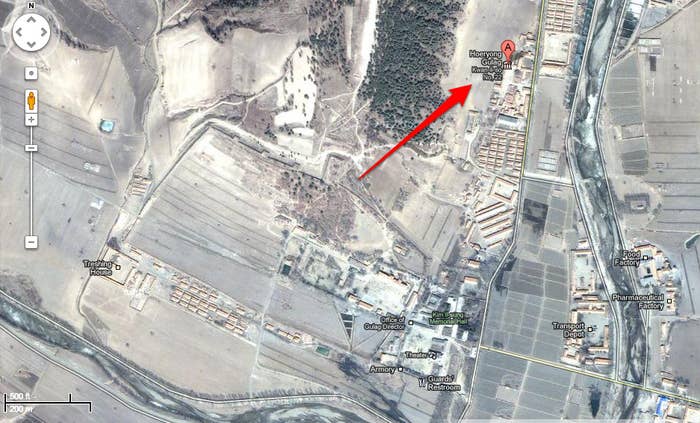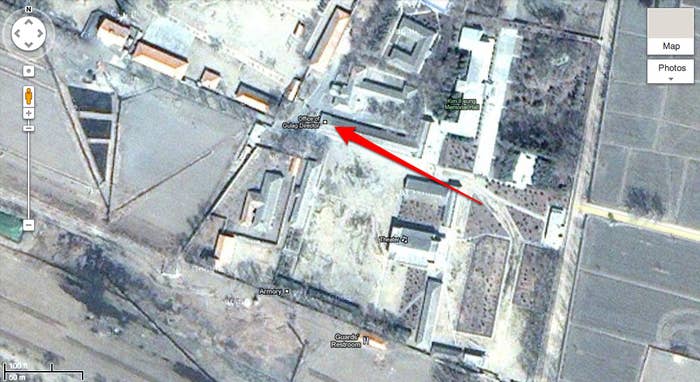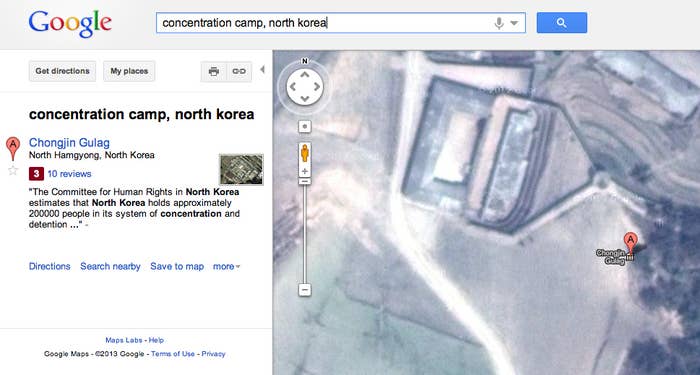How do you label a notorious international human rights violation on a map? Here's how Google did it:

The company's mapping data refers to North Korea's labor camps as gulags — and details their layouts:

A search for "concentration camp, North Korea" provides similar results:

Aside from a handful of territorial disputes around the world, this is one of the only examples of Google Maps data I've seen that's blatantly political — or if not political, then at least informed by a viewpoint not endorsed by the leaders of the country it describes.
The purpose is obvious: to make the existence of these camps known; to point out that North Korea is secretive, and would never release this data on its own; to emphasize that the country is not capable of producing satellite imagery; and, most important, to remind outsiders that thousands of its citizens (and some foreigners) are sent to these camps, where they are subjected to hard labor, starvation, torture, medical experimentation, and execution.
What Google is doing here is human rights activism disguised as mapmaking.
Google Chairman Eric Schmidt visited North Korea in early January and made a somewhat standard appeal for more openness and freedom in the country. Schmidt's daughter was less circumspect about her visit. "The best description we could come up with," she wrote, "[is that] it's like The Truman Show, at country scale."
By listing North Korean prison camps in Maps, Google — with the help of volunteer mappers, who contributed original data that was then approved by the company — is making a statement that's unqualified, loud, and more direct than either Schmidt's or his daughter's. Google is putting North Korea on the map. As a torturer of its people.
